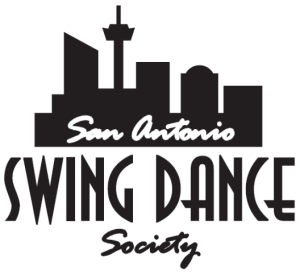Modern Swing
Frankie Comes out of Retirement
Though Lindy Hop may have been temporarily forgotten, the recordings of Whitey's Lindy Hoppers remained in good condition in the archives of 30s filmography. In the 80s a talented group of Jazz dancers stumbled upon the tapes and were awestruck by this amazing dance. It had so much energy and partnership and it had such a strong connection with the music. They wanted to learn it, and the best way to learn a dance like that, is to learn from the people who danced it. They opened up the phone book and went down the list of all the dancers.
Eventually they stumbled upon the number of Frank Manning, the Frankie Musclehead who had been so pivotal to Lindy Hop all those years ago! At first, Frankie declined. He had left dancing behind him and was focused on other things in his life at that point. After several insistent visits, however, Frankie eventually consented, and Lindy Hop was on its way to revival.
This small group of dancers were by no means in the mainstream. They initially had no intention of bringing Lindy Hop back in the lime light of the public eye. They wanted only to learn the dance for their own enjoyment. Besides, the music wasn't right for it yet. There was no popular music to dance to.
Meanwhile...
Then the 90s hit. At that time, Grunge was the most popular music. It was rebellious, self-effacing, and all the rage. However, it was very unhappy music. There had to be an upbeat alternative to the jaded garage bands. Neo-swing and Ska became a that alternative. With the popularization of neo-swing (new swing) came the popularization of everything that was associated with the swing-era: big band, zoot suits, fishnet hose and, of course, swing dancing. Swing Kids and Swingers were filmed, and the swing "image" became even more popular. Then, when the Gap Khaki commercial came out in 1998 -- everybody knows the one I'm talking about -- everyone went wild. Dance halls were flooded with people who wanted to learn to dance like that.
Two Parts Come Together
By this time, the Jazz dancers who had brought Frankie out of retirement were well versed in Lindy Hop and had their own bourgeoning ideas about the motivations behind movement and the relationships and techniques between dancers. They now had scads of eager students waiting to have Lindy Hop passed on to them.Lessons cropped up all over the globe. Lindy workshops (in-depth dance lessons) and exchanges (huge dance parties held in different cities) began to form. Before long, Lindy Hop was more than a fad revival of a dead dance -- it was a culture. People from all walks of life could embrace this dance and find significance in what it could do for them. It didn't matter what sex, color or economic status anyone was. They could all gather peaceably on the dance floor. Again, just as it did in the 30s and 40s, Lindy Hop crossed all barriers to bring people together as equals.
Today
Today, Lindy Hop isn't the bursting cultural phenomena that it was in the Swing Era, nor is it the trendy fad that it was in the 90s. It is, however, a great international dance of class and culture shared by every sort of people on the globe. Because it still has it's inventive, playful roots, it can be danced to any kind of music. So, no matter what is popular, Lindy Hop can stylistically morph into something that fits. It is a huge part of American cultural history, and a vital part of the artistic community. It is a legacy that continues to live on today through the people who tell its story and through the people who dance its dance.
